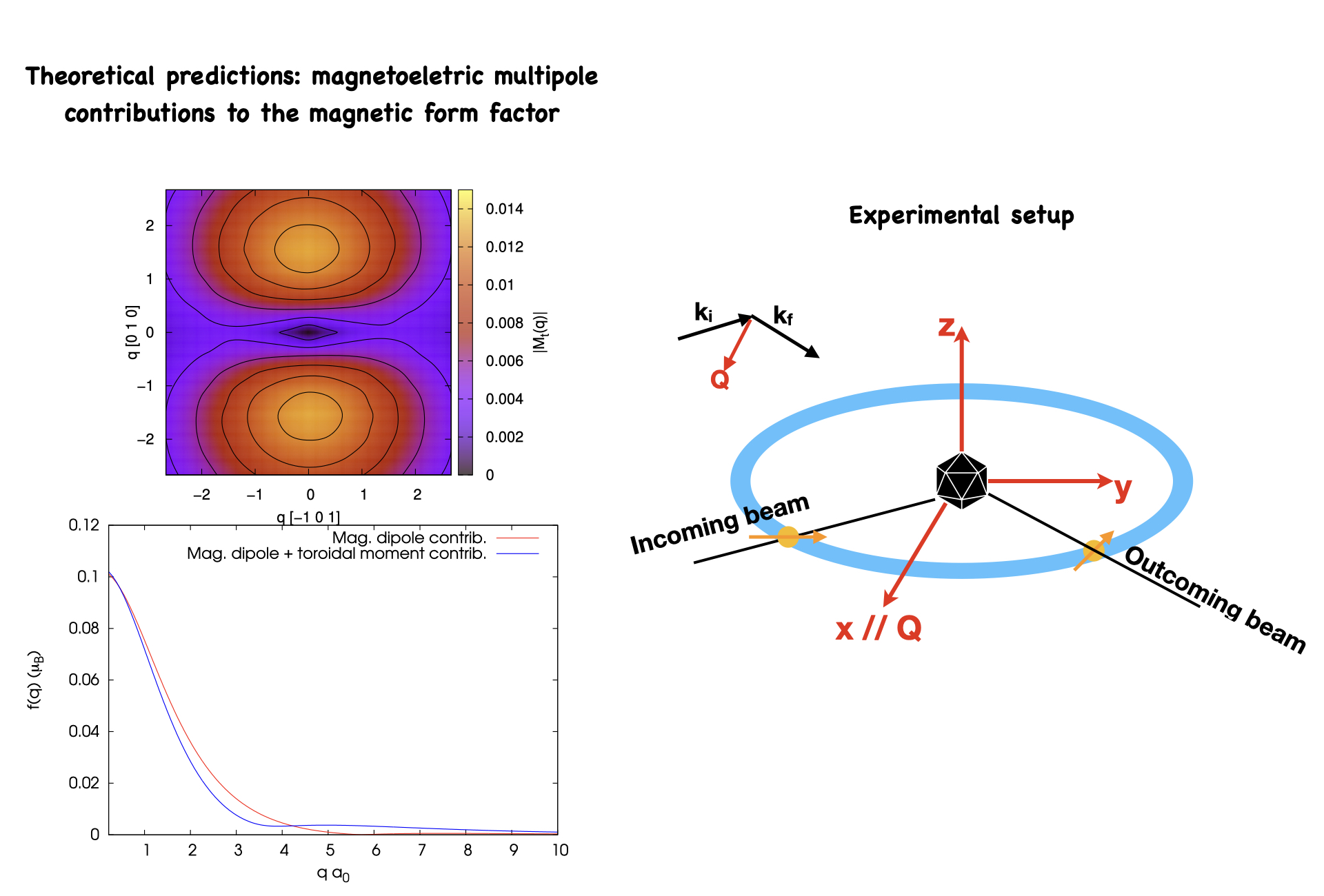Searching for hidden order with neutrons
Hidden orders usually introduce new symmetry properties into materials, and often they require a crystal to be described by a different, bigger, unit cell than the paramagnetic (i.e. hidden-order-free) one. Scattering phenomena are sensitive to the symmetry of the crystal, and if the scattering probe furthermore interacts with the local arrangement of magnetic moments, it can possibly reveal hidden orders.
Neutrons interact with the nuclei of a crystal and, being spin-½ fermions, they are sensitive to the electronic magnetization density as well [1], therefore they can detect both the crystal and magnetic symmetry. When the crystal and the magnetic symmetry differ (e.g. in antiferromagnets), the nuclear and magnetic peaks are well separated in the reciprocal space, which makes the neutron scattering technique particularly suitable to reveal hidden orders.
Density Functional Theory (DFT) is a well-suited and widespread ab initio technique which allows to get detailed information about the electronic charge and magnetization densities in the local atomic environment: by means of a decomposition of the density matrix [2] it is possible to get insight into the atomic magnetoelectric multipoles.
The aim of our work is to develop a computational tool to calculate the multipoles contribution to the neutron scattering intensity. Using DFT and symmetry analysis techniques, we look for materials whose magnetoelectric multipoles give a relevant contribution to the scattering intensity and/or produce scattering peaks well separated from both the nuclear and purely magnetic peaks, thus allowing a clear detection of the hidden order [3,4].

References
- A. T. Boothroyd, external pagePrinciples of Neutron Scattering from Condensed Matter,call_made Oxford University Press (2020).
- F. Bultmark, F. Cricchio, O. Granas, and L. Nordstrom, external pageMultipole decomposition of LDA+U energy and its application to actinide compoundscall_made, Phys. Rev B 80, 035121 (2009).
- S. W. Lovesey, external pageMagneto-electric operators in neutron scattering from electronscall_made, J. Phys.: Condens. Matter 26, 356001 (2014).
- S. W. Lovesey and D. D. Khalyavin, external pageNeutron scattering by Dirac multipolescall_made, J. Phys.: Condens. Matter 29 215603 (2017).
